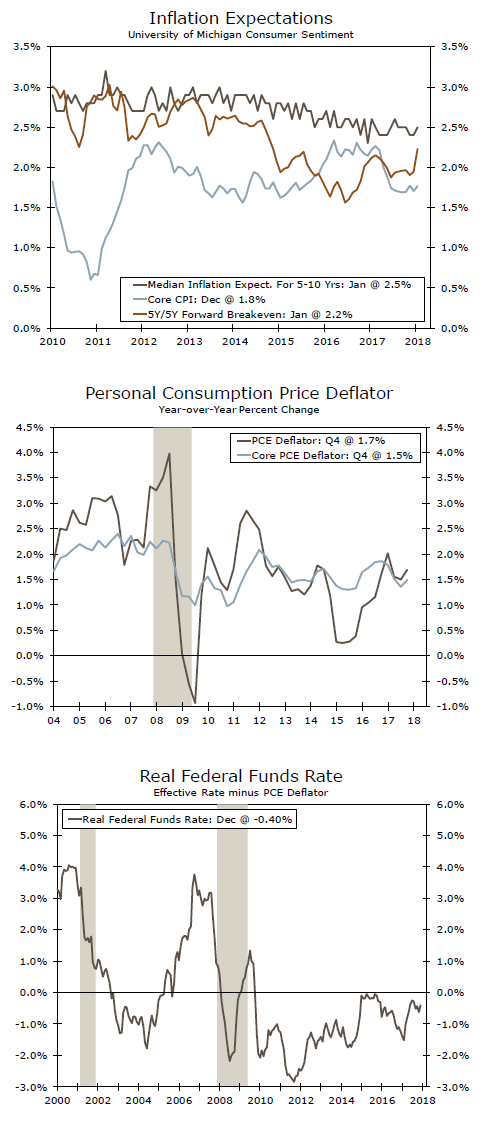The FOMC left interest rates unchanged but upgraded their assessment of economic growth and the inflation outlook. The policy statement noted that the Fed intends to continue to gradually tighten monetary policy.
Short, Simple and Succinct
The Fed kept things simple at its January FOMC meeting. There were no surprises. Policy remained unchanged and the only modest changes were made to the policy statement, aside from removing language inserted following this past fall’s hurricanes. Committee members firmed up their assessment of the economic environment, noting that "employment, household spending and business fixed investment have been solid and that the unemployment rate had stayed low." The Fed also acknowledged that "market-based measures of inflation compensation have increased in recent months but remain low." In short, the Fed sees the economy moving in the right direction but not at a pace that warrants a more hawkish posture.
Mission Accomplished? At Least Partly So.
The minimal changes made to the policy statement also help make for a smooth transition of the Fed’s leadership from Janet Yellen to Jerome Powell. Yellen can now make a clean break. Yellen’s tenure at the Fed has seen monetary policy take several important steps toward normalization, as the unemployment rate has fallen below most traditional measures of full employment and the inflation rate has finally risen back from uncomfortably low levels that had fueled fears of deflation. With the global economy reviving and commodity prices rebounding, the Fed appears to be firmly on course to gradually raise interest rates over the next few years.
Monetary policy still has long way to go before it gets back to ‘normal’ and the job of determining what the new normal is and how the Fed get there falls to Jerome Powell and a few players to be named later. Trimming back the Fed’s balance sheet and finding the new neutral level for the federal funds rate could prove more difficult than is now expected. This is a big reason why policymakers are not eager to buy into the recent firming in the economic and inflation data. The economy has been at this point a few times before but conditions have been upended by natural disasters, political turmoil and financial turmoil overseas.
We continue to expect the Fed to hike the funds rates three times this year, with the next hike coming at the March 20-21 FOMC meeting. Jerome Powell will outline his expectations for the economy and interest rates at his Semi- Annual Testimony on Monetary Policy in mid or late February to outline any potential changes in the Fed’s view on economic growth and inflation. As we noted following the December FOMC meeting, the upgrade in the Fed’s 2018 GDP expectations was out of proportion with the modest reduction in expectations for the unemployment rate, which leaves the Fed plenty of flexibility to make the case for an additional rate hike if need be. If stronger GDP growth comes from increased productivity and stronger labor force growth, the Fed could move more gradually.












